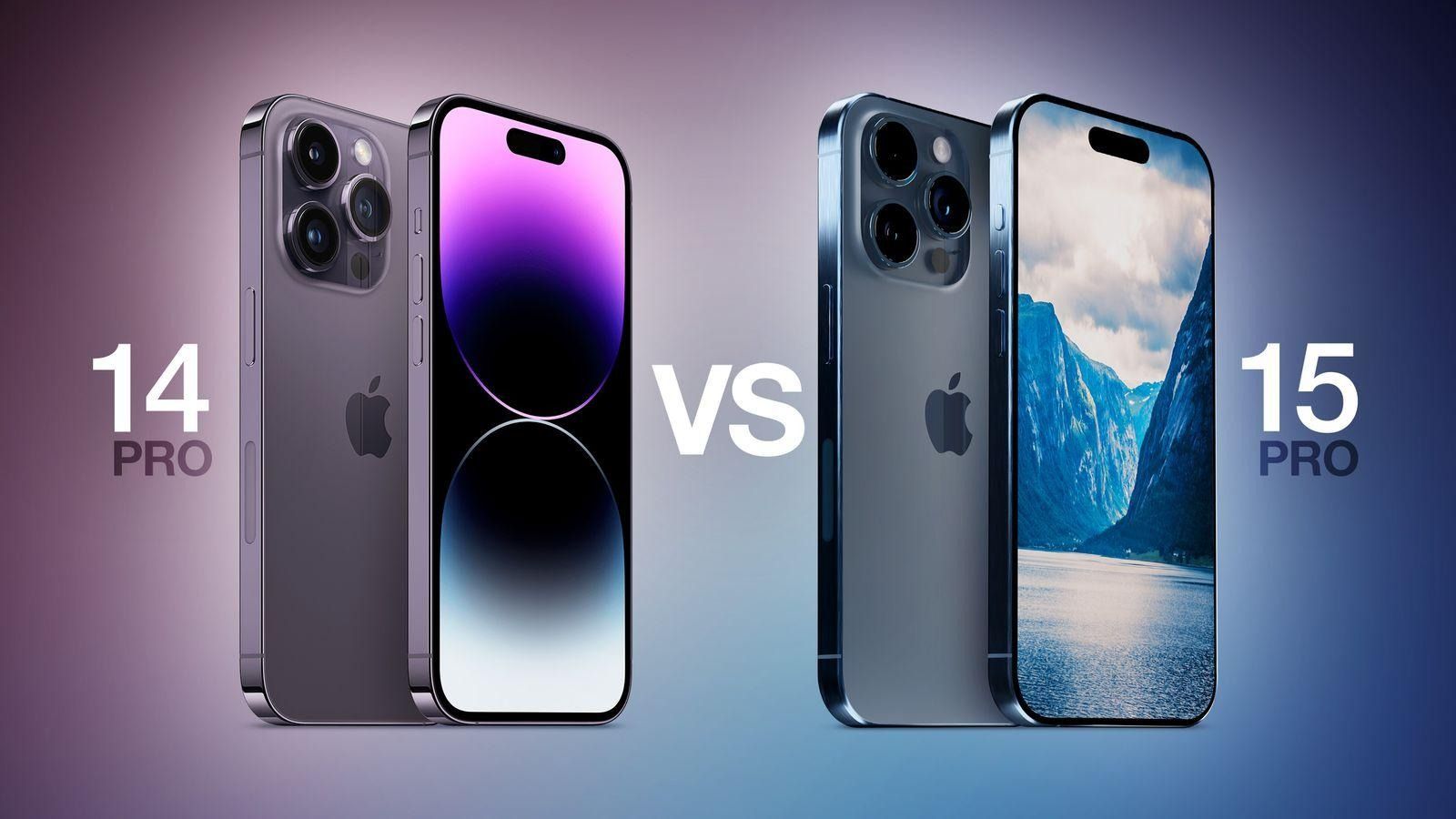

In the ever-evolving world of smartphones, Apple’s annual iPhone releases always generate buzz. Let’s learn more about this topic below with Slice Master as we compare the latest iPhone 15 to its predecessor, the iPhone 14. Is the upgrade worth it? Let’s dive in.
The iPhone 15 maintains Apple’s signature sleek design, but with a few notable changes. The most obvious is the shift from the notch to the Dynamic Island, which was previously exclusive to the Pro models. This interactive area adds functionality and style.
Both devices feature 6.1-inch Super Retina XDR OLED displays, but the iPhone 15 boasts slightly thinner bezels, offering a more immersive viewing experience. The screen brightness has also been improved, reaching up to 2000 nits in outdoor settings.
Another significant change is the adoption of USB-C ports in the iPhone 15, replacing the Lightning connector. This shift aligns with global standards and offers faster data transfer and charging capabilities.
The iPhone 15’s build quality remains top-notch, with a durable Ceramic Shield front and aluminum frame. However, the new frosted glass back adds a touch of elegance and improved grip compared to the glossy finish of the iPhone 14.
Under the hood, the iPhone 15 is powered by the A16 Bionic chip, the same processor found in last year’s iPhone 14 Pro models. This represents a significant upgrade from the A15 Bionic in the standard iPhone 14.
The A16 Bionic offers improved performance and energy efficiency. Users can expect faster app launches, smoother multitasking, and enhanced gaming experiences. The chip’s neural engine also boosts machine learning tasks and computational photography.
Battery life has seen a modest improvement in the iPhone 15. While both models offer all-day battery life, the iPhone 15 edges out its predecessor by about an hour in mixed-use scenarios.
The iPhone 15’s adoption of USB-C also means faster charging capabilities when using compatible chargers. This can be a significant advantage for users who frequently need quick top-ups throughout the day.
Photography enthusiasts will appreciate the camera upgrades in the iPhone 15. The main camera has been bumped up to 48 megapixels, a significant increase from the 12-megapixel sensor in the iPhone 14.
This higher resolution allows for more detailed photos and improved low-light performance. The iPhone 15 also introduces a 2x optical-quality zoom, achieved through in-sensor cropping, providing more versatility without sacrificing image quality.
Portrait mode has been enhanced, now allowing users to capture portrait shots without manually switching to portrait mode. The iPhone 15 can recognize subjects and automatically apply a depth-of-field effect, which can be adjusted after the shot.
Video capabilities remain strong in both models, with support for 4K recording at 60 fps. However, the iPhone 15’s improved image signal processor results in better color accuracy and dynamic range in video footage.
Both the iPhone 15 and iPhone 14 run on iOS 17, Apple’s latest mobile operating system. This means users of both devices can enjoy new features like interactive widgets, improved autocorrect, and enhanced privacy options.
However, the iPhone 15’s hardware allows for some exclusive features. The Dynamic Island, for instance, offers more interactive possibilities and information at a glance compared to the traditional notch on the iPhone 14.
The iPhone 15 also introduces new safety features, including Crash Detection and Emergency SOS via satellite, providing peace of mind in critical situations. These features were previously available on the iPhone 14 Pro models but are now standard on all iPhone 15 variants.
Both the iPhone 15 and iPhone 14 support 5G networks, ensuring fast data speeds where available. However, the iPhone 15’s modem has been upgraded to support more 5G bands, potentially offering better coverage and speeds in certain areas.
The adoption of USB-C in the iPhone 15 also opens up new connectivity options. Users can now connect a wider range of accessories directly to their iPhone, from external displays to professional-grade cameras.
Wi-Fi 6E support in the iPhone 15 offers faster and more reliable wireless connections on compatible networks, a feature not present in the iPhone 14. This can be particularly beneficial in crowded Wi-Fi environments.
As with previous generations, the introduction of the iPhone 15 has led to a price reduction for the iPhone 14. This makes the older model an attractive option for budget-conscious consumers who still want a capable device.
The iPhone 15, while more expensive, offers several notable upgrades. The improved camera system, more powerful processor, and features like the Dynamic Island may justify the higher price for many users.
It’s worth noting that Apple has maintained the same storage options for both models, starting at 128GB. This means users won’t need to factor in storage differences when making their decision.
For those holding onto older iPhone models, the iPhone 15 represents a more significant upgrade. The jump in performance, camera capabilities, and features is more pronounced when compared to devices from two or more generations ago.
Apple has made strides in reducing the environmental impact of its products, and this is evident in both the iPhone 14 and iPhone 15. However, the iPhone 15 takes this a step further with increased use of recycled materials.
The iPhone 15’s packaging has been redesigned to eliminate plastic wrap, furthering Apple’s commitment to reducing plastic use. This may be a deciding factor for environmentally conscious consumers.
Both models are part of Apple’s trade-in program, encouraging users to recycle their old devices. However, the iPhone 15’s use of more common components (like USB-C) may make it easier to repair and recycle in the long run.
For iPhone 14 users, the decision to upgrade to the iPhone 15 largely depends on individual needs and preferences. The improvements, while notable, may not be substantial enough for some users to justify the cost of upgrading after just one year.
However, for those using older iPhone models or Android devices, the iPhone 15 presents a compelling option. The combination of improved performance, enhanced camera capabilities, and new features like the Dynamic Island offer a significant upgrade experience.
Photography enthusiasts will likely appreciate the jump to a 48-megapixel main camera and the improved computational photography features. The ability to capture portrait mode photos automatically is a standout feature that can enhance the photography experience.
For power users, the A16 Bionic chip’s improved performance and energy efficiency could be a decisive factor. The ability to handle demanding tasks more smoothly and efficiently can greatly enhance the user experience, especially for those who use their phones for work or intensive gaming.
The shift to USB-C is another consideration. For users heavily invested in the Lightning ecosystem, this change might require some adapters or new accessories. However, the long-term benefits of faster data transfer and universal compatibility may outweigh this short-term inconvenience.
Those who prioritize display quality might find the iPhone 15’s brighter screen and Dynamic Island appealing. The more immersive viewing experience and interactive possibilities offered by these features can significantly enhance day-to-day use.
Battery life improvements, while modest, could be crucial for users who struggle to get through a full day on a single charge. The faster charging capabilities via USB-C also add to the convenience factor.
It’s also worth considering future-proofing. The iPhone 15’s more advanced hardware is likely to remain capable and receive software updates for a longer period, potentially offering better long-term value.
Ultimately, the decision to upgrade from an iPhone 14 to an iPhone 15 comes down to personal priorities. If the camera improvements, performance boost, and new features align with your needs, the upgrade could be worthwhile.